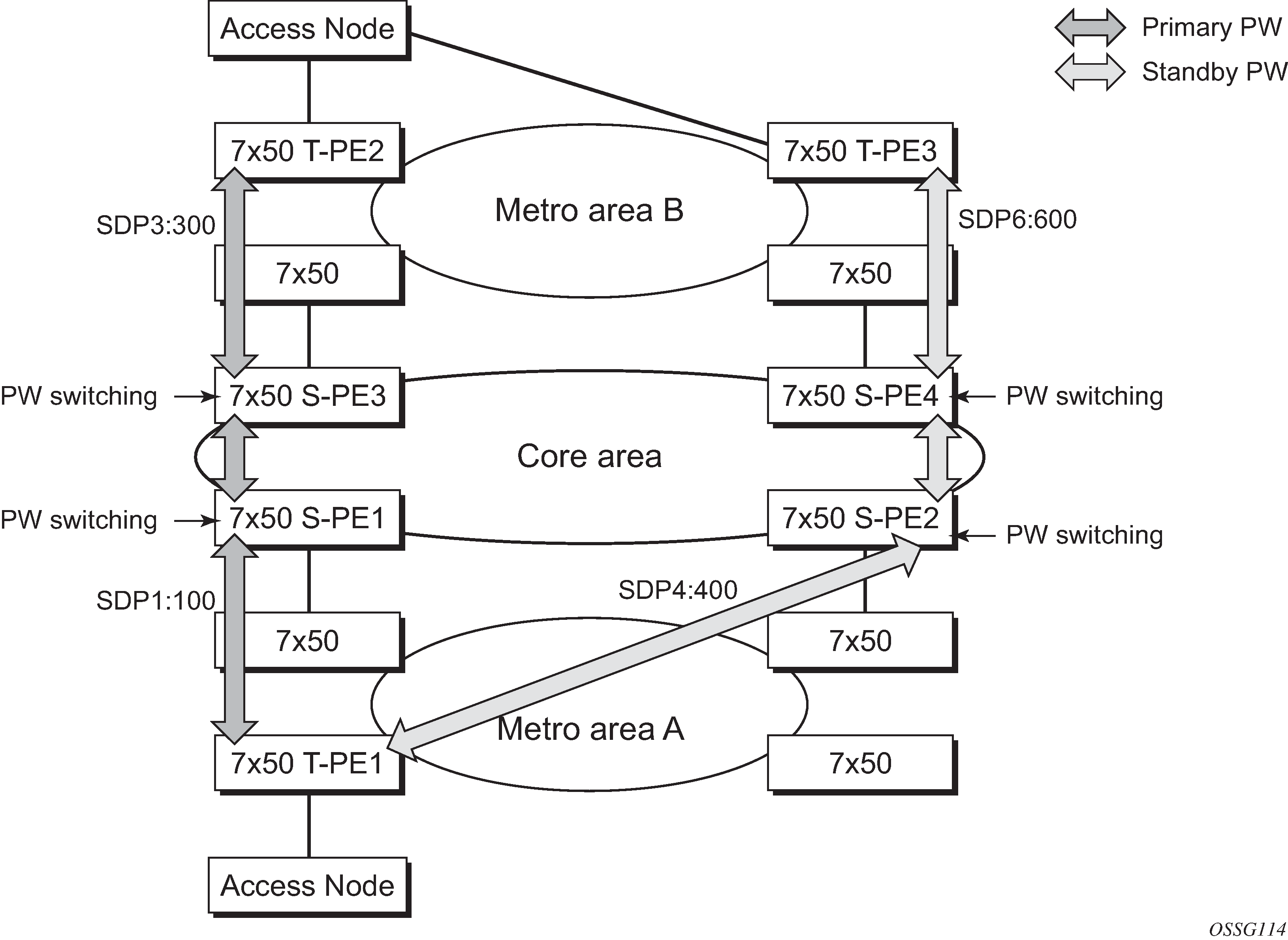Pseudowire switching scales VLL and VPLS services over a multi-area network by removing the need for a full mesh of targeted LDP sessions between PE nodes. Figure 1 shows the use of pseudowire redundancy to provide a scalable and resilient VLL service across multiple IGP areas in a provider network.
In the network in Figure 1, PE nodes act as leading nodes, and pseudowire switching nodes act as followers for the purpose of pseudowire signaling. A switching node needs to pass the SAP interface parameters of each PE to the other PEs. T-PE1 sends a label mapping message for the Layer 2 FEC to the peer pseudowire switching node; for example, S-PE1. The label mapping message includes the SAP interface parameters, such as MTU, in the label mapping message. S-PE1 checks the FEC against the local information and, if a match exists, appends the optional pseudowire switching point TLV to the FEC TLV in which it records its system address. T-PE1 then relays the label mapping message to S-PE2. S-PE2 performs similar operations and forwards a label mapping message to T-PE2.
The same procedures are followed for the label mapping message in the reverse direction; for example, from T-PE2 to T-PE1. S-PE1 and S-PE2 make the spoke-SDP cross-connect only when both directions of the pseudowire are signaled and matched.

The pseudowire switching TLV is useful in a few situations. First, it allows for troubleshooting of the path of the pseudowire, especially if multiple pseudowire switching points exist between the two T-PE nodes. Second, it helps in loop detection of the T-LDP signaling messages where a switching point receives back a label mapping message that the point already relayed. Finally, it can be inserted in pseudowire status messages when they are sent from a pseudowire switching node toward a destination PE.
Pseudowire status messages can be generated by the T-PE nodes and, or the S-PE nodes. Pseudowire status messages received by a switching node are processed and passed on to the next hop. An S-PE node appends the optional pseudowire switching TLV, with the S-PEs system address added to it, to the FEC in the pseudowire status notification message, only if that S-PE originated the message or the message was received with the TLV in it. Otherwise, the message was originated by a T-PE node and the S-PE should process and pass the message without changes, except for the VC-ID value in the FEC TLV.